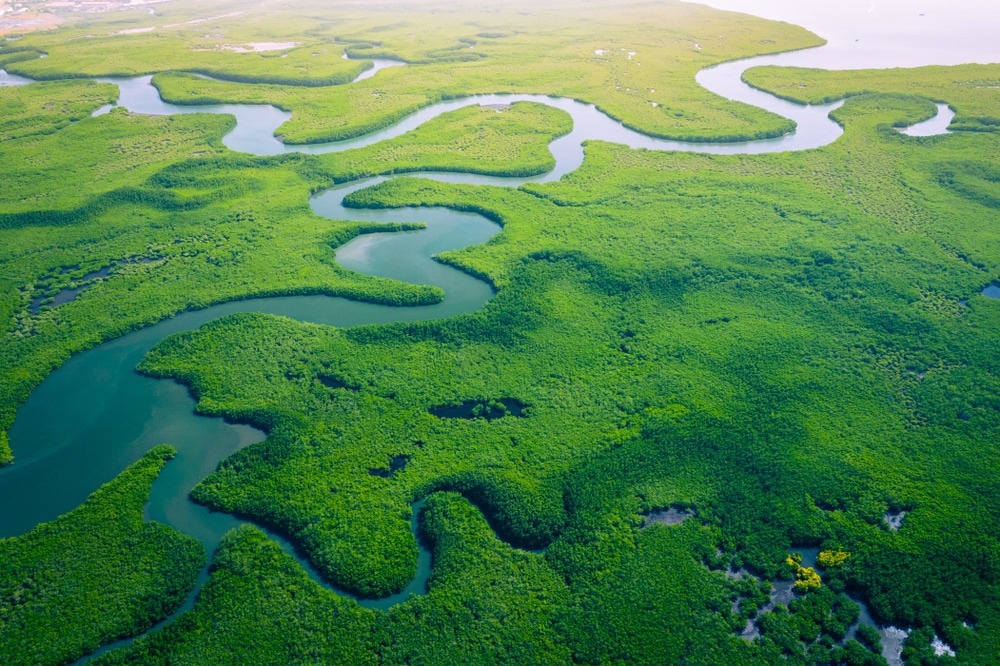Drones are increasingly being employed in several areas of life, performing a multitude of critical functions. This article will explore how they can aid conservation efforts.

Image Credit: Curioso.Photography/Shutterstock.com
The Growing Use of Drones
Drones, also known as “Unmanned Aerial Vehicles,” are fast becoming a key technology in multiple industries. The technology was originally developed for use in the military and aerospace industries, possessing differing levels of autonomy. Drones have the advantage of being more efficient and safer to operate than conventional equipment, which requires a human pilot or operator.
Drones can vary from remote-controlled versions to more advanced, near-fully autonomous equipment. In recent years, there has been a growing trend toward full autonomy. Technologies such as smart sensors, LiDAR, machine learning algorithms and neural networks are increasingly employed in the field.
There are different classes of drones based on their travel distance and the height they can fly, ranging from close-range to long-range or “endurance” drones. Endurance drones can travel at 3,000 feet in the air and over a 400+ mile range. Hobbyists typically use close-range drones.
Drones have been used in dangerous and inaccessible environments, aiding the search for survivors after natural disasters, monitoring changes in physical environments caused by mining operations, detecting pollution, delivering critical medical supplies to remote areas, monitoring protests, and during combat operations.
Why Conservation Efforts are Important
Human industrial activity and the growing world population have devastatingly affected biodiversity and the environment. In 2020 alone, fifteen species were declared extinct by the International Union for the Conservation of Nature. The same organization has predicted that over the course of the next one hundred years, 67% of endangered species and 99.9% of critically endangered species will disappear.
Aside from the loss of unique animal and plant species, there is a potentially devastating impact on human health. As wild habitats are lost, humans and animals come into closer contact with each other, with the potential for diseases to jump from their natural hosts to human populations. This increases the danger of new pandemics. Moreover, many species of plants with medicinal benefits could be lost before they are even discovered.
Conservation efforts are critical if the deleterious effects of human activity on the natural world are to be curbed in the future. Monitoring the number and distribution of animal species is a key area of environmental science, which has traditionally been a laborious, costly, and time-consuming undertaking. Drones have significant benefits for monitoring conservation efforts, improving efficiency and saving costs.
Uses of Drones in Conservation
Drones have many uses in conservation due to their ability to remotely monitor activities and wildlife populations in a safe and efficient manner at a fraction of the cost of traditional, human-centric methods.
Global wildfires have become a central news topic in recent years due to the warming climate. Wildfires appear to be becoming more frequent and intense. After a wildfire has been extinguished, replanting efforts are conducted to replenish lost plant populations. This is a laborious, expensive, and slow process which requires constant monitoring. Drones are perfect for this purpose.
Aside from monitoring replanting efforts after wildfires, drones can also be employed to perform the replanting itself. It is estimated that a human can plant up to 3,000 trees per day, whereas drones could plant as many as 10,000 per day with a minimum of human intervention.
Another key conservation issue is poaching. This is a commonplace and significant problem, especially in under-developed nations where some individuals have no other form of income. The scale of the problem is such that it is one of the main factors in pushing several species to the brink of extinction. Drones can be used to catch poachers in the act.
Utilizing Drones for Monitoring Wildlife Health
A recent project has demonstrated the efficaciousness of drones for conservation efforts. In a world first, a team of scientists used drones to extract the breathing and heart rates of African wildlife. The project is a collaborative effort between scientists and cinematographers.
The team used sophisticated signal processing techniques to detect and interpret the small movements of animals’ chest cavities. While this was challenging, the team managed to achieve its objective. Vital signs captured from animals such as antelope and giraffes indicated that the target animals were healthy, as it was in the expected range.
The project has been featured in a new documentary series on the Curiosity Stream channel entitled Doug to the Rescue.
The Future of Drones in Conservation
It has become increasingly obvious that human activity has had a devastating effect on the natural world. Industrial activity, poaching, population and urban growth, and the increasing prevalence of disasters such as wildfires caused by intensifying climate change have taken their toll on environmental and biodiversity loss.
Drones possess the potential to drastically improve the efficiency and cost-effectiveness of multiple conservation efforts such as poaching monitoring, replanting and rewilding efforts, and monitoring wildlife populations. With these technologies, environmental scientists have access to a powerful suite of tools that are increasingly important and efficacious with every passing year.
References and Further Reading
Built In (2022) Drone Technology [online] builtin.com. Available at: https://builtin.com/drones
Gibson, C (2022) World first experiment using drones for wildlife health checks [online] unisa.edu.au. Available at: https://www.unisa.edu.au/unisanews/2022/july/feature/
Daly, D (2022) How drones are used in conservation efforts [online] consortiq.com. Available at: https://consortiq.com/uas-resources/how-drones-are-used-in-conservation-efforts
Disclaimer: The views expressed here are those of the author expressed in their private capacity and do not necessarily represent the views of AZoM.com Limited T/A AZoNetwork the owner and operator of this website. This disclaimer forms part of the Terms and conditions of use of this website.